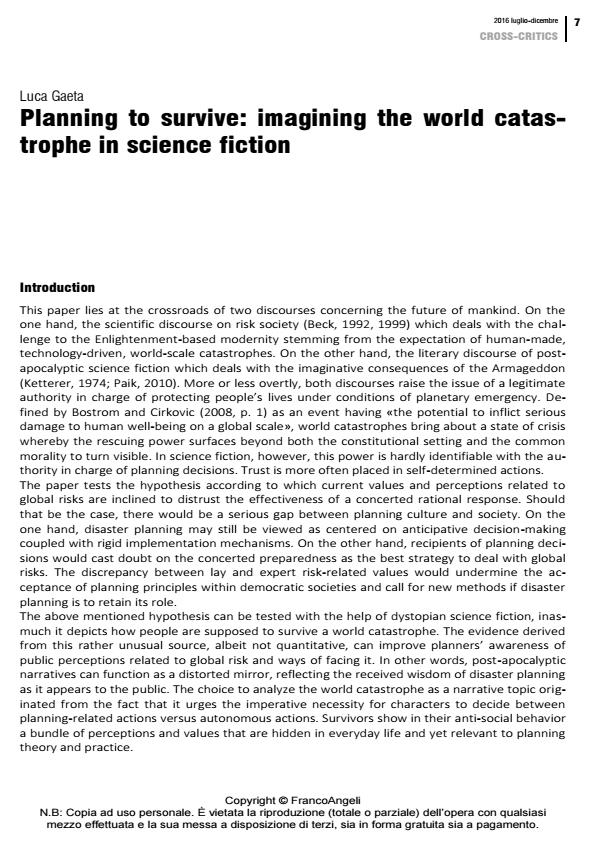Planning to survive: imagining the world catastrophe in science fiction
Titolo Rivista CRIOS
Autori/Curatori Luca Gaeta
Anno di pubblicazione 2016 Fascicolo 2016/12
Lingua Inglese Numero pagine 14 P. 7-20 Dimensione file 1597 KB
DOI 10.3280/CRIOS2016-012002
Il DOI è il codice a barre della proprietà intellettuale: per saperne di più
clicca qui
Qui sotto puoi vedere in anteprima la prima pagina di questo articolo.
Se questo articolo ti interessa, lo puoi acquistare (e scaricare in formato pdf) seguendo le facili indicazioni per acquistare il download credit. Acquista Download Credits per scaricare questo Articolo in formato PDF

FrancoAngeli è membro della Publishers International Linking Association, Inc (PILA)associazione indipendente e non profit per facilitare (attraverso i servizi tecnologici implementati da CrossRef.org) l’accesso degli studiosi ai contenuti digitali nelle pubblicazioni professionali e scientifiche
The paper aims at reviewing the main strategies for surviving a world catastrophe in science fiction. The underlying assumption is that science fiction can provide insight into unspoken social attitudes towards global risks as well as towards the effectiveness of disaster planning. The review covers a broad selection of fiction published in the US and UK since the end of WW2, featuring three types of human-caused world catastrophes: nuclear, biological and environmental. The results highlight that the imagination of what is helpful to survive the apocalypse has evolved towards patterns of individual actions instead of governmental or collective actions and towards the ability to face unexpected events rather than planning ahead. Such imagination can be approximated to underlying feelings as regards planning in the British and North American society at least, although the extent to which fiction reflects actual values and beliefs is open to dispute
Luca Gaeta, Planning to survive: imagining the world catastrophe in science fiction in "CRIOS" 12/2016, pp 7-20, DOI: 10.3280/CRIOS2016-012002